Blog
Press Release: September 5, 2023
Komba Timeline Article
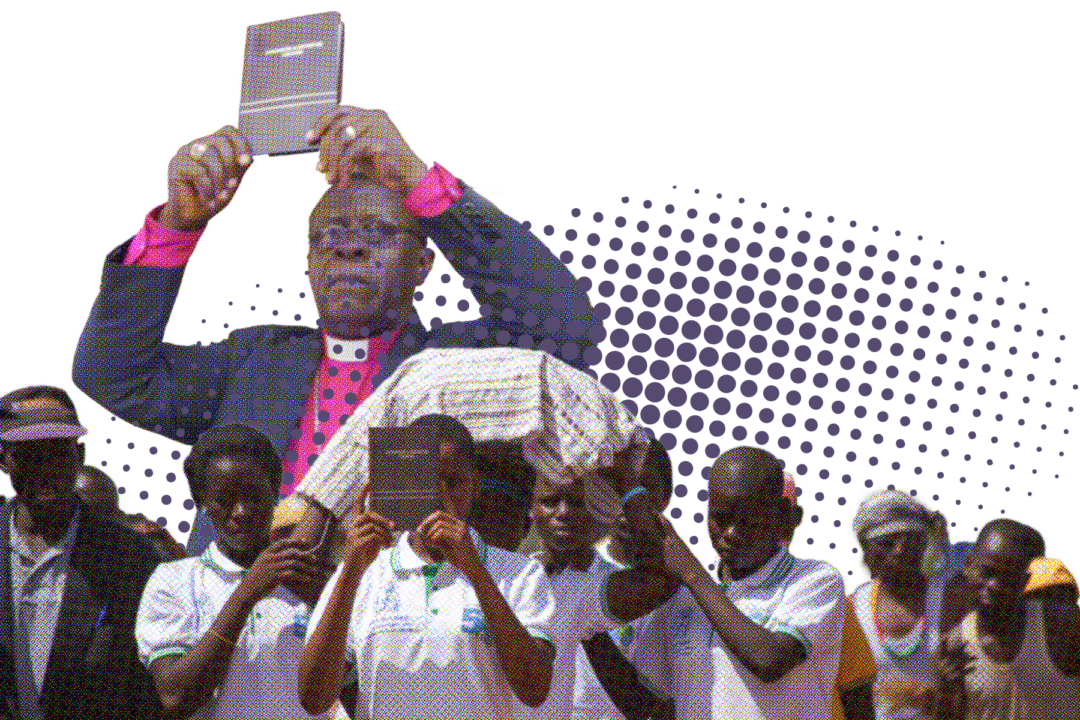
STAGES OF TRANSLATION
The Story of the Komba Bible
“I planted, Apollos watered, but God gave the growth. So neither he who plants nor he who waters is anything, but only God who gives the growth.” 1 Corinthians 3:6-7
In the dry northeast region of Ghana lives a group of people with a common ancestor but many language dialects. God loves and wants the Komba to know His promises for them. The Komba people hope to receive their completed translated Bible soon. This joyous event has been over 70 years in the making. God worked through many individuals and organizations to plant seeds, encourage church and faith development, and translate Scripture into accurate, beautiful, and clear Komba.
Part 1

Western missionaries plant the first church, a Baptist congregation, in the 1950s among the Komba in Namong. In the early 1980s, Lutheran missionaries Tim and Beth Heiney move to Ghana to serve the Konkomba area. Their influence is far-reaching, and faith in Christ quickly spreads among the many Konkomba areas. Thomas Akar adapts the New Testament into an audio cassette for the Komba people in 1984.

Reverend Walter Demoss and his wife Helena receive the assignment to plant churches and train local church leaders in Northern Ghana in 1968. Although called to serve the Moba people, Reverend Demoss trains a young Komba man as well, Reverend Samuel Konlaan. Rev. Konlaan laments that his people’s only physical Bible translation is not understandable for them due to the wide variety of dialects within the language. Claude and Rhoda Hogue, LBT missionaries who relocated to Ghana because of the war in Liberia, connect with Rev. Konlaan. They share with him the work that LBT is doing in Liberia. The Evangelical Lutheran Church of Ghana (ELCG) is growing, with many churches and a great need to train more leaders. Rev. Konlaan wants his people to walk in the light of Scripture and live in the hope of the gospel. He knows an accurate and understandable translation is crucial, so he writes a letter to LBT, asking for their partnership.
In response to Rev. Konlaan’s letter, Lutheran Bible Translators asks Rev. DeMoss to complete a language survey of the Northern Komkomba area. He concludes that the language of Komba is quite diverse, with many different dialects. In 2002, Dr. Paul Fynn, president of the ELCG, invites LBT to send missionaries to Gbintiri and Nasuan.

One year after Dr. Fynn’s request, two young LBT families step onto Ghanaian soil.
David Federwitz (a second-generation missionary) and his wife, Valerie, arrive in Gbintiri. They are thrilled to finally have a placement after years of preparation but also feel nervous about the monumental tasks before them. They begin relationship building immediately, going into fields to help with farming, visiting community members in their homes, and connecting at Market Day. David especially loves connecting with other young families, swapping stories of the joys of raising children. “We constantly met new people in the first six to nine months,” he remembers, “but eventually our conversations could get more in-depth.” The Federwitz family is also learning the language, which they find to be a good relationship builder as community members give them grace when they mess up and share a laugh.
Reverend Nathan and Sarah Esala first arrive in the village of Nasuan on July 17, 2003. Nathan remembers, “We arrived at four in the afternoon, and the sun went down at six. Near the equator, it gets dark as soon as the sun goes down. With no lights in the house and warm weather, we were a little uncertain, but we were welcomed kindly. People from the town drove in a truck carrying some of our stuff, arriving sometime after dark. They unloaded the truck right away and helped us settle in for the night. They even left a person to watch the house for us, “a watchman,” to ensure we were safe. First thing in the morning, several people accompanied us to the market to buy things we needed.”
Early work in the community requires patience and persistence. Nathan spends three years partnering with his local colleagues, reaching out to individual villages and communities to promote literacy classes and Bible translation. They send letters to villages, then travel miles on motorcycles to visit in person. They wait hours for chiefs, elders, and community members to gather. Once all are present, Nathan and his team share their excitement for literacy and Bible translation. They explain that the project will provide training, chalkboards, and lanterns but need support to feed literacy volunteers during the sessions. “Contribute what you can,” they implore, “perhaps a bag of grain.” The communities need much explanation; this is unprecedented, but they agree to provide support. Once a year, they gather together to collect donations and have new readers show off their skills. Nathan estimates visiting over 100 villages, learning how to best organize the efforts along the way. An official organization, The Komba Literacy and Bible Translation Project (KOLIBITRAP), is formed in 2004, naming Mr. Samson Nadee as the first chairman. “All of this is not separate from the translation work, but part of it,” Nathan explains. These early relationships and community engagement efforts will be the reason the Komba faith community explodes and celebrates each translation milestone. In 2005, KOLIBITRAP conducts a feasibility study for the Northern Komba language project.
Part 2
Literacy is a huge part of the Komba Bible project from early on. Other ethnic groups in the area are receiving literacy education, and the Komba community desires the same. In 2008, the Bible translation team pauses work on the New Testament to draft Literacy Primers one, two, and three. “There wasn’t a literacy team and a Bible translation team, but rather everyone worked together,” David explains, “We saw literacy as an important tool toward Scripture engagement, as necessary for the Bible translation project to be successful. And we see the fruition now as people read their Komba New Testaments.”
Once the curriculum is available, the literacy movement travels through the Komba area. Chiefs invite KOLIBITRAP to open literacy classes in their communities. In 2006 is the first Annual KOLIBITRAP Harvest Day. Each year, the proceeds benefit the printing of 3,000 Primers and the eventual building of the KOLIBITRAP Office (2014).
Scripture engagement also creates connection opportunities. David specifically remembers, “Elijah Matibin and I worked together to create a questionnaire that we sent to all the pastors of all the different denominations of the communities in the area towns. Elijah asked pastors, ‘What challenges are you dealing with in your community and church? Where do people want to be Christians, but they feel drawn back to the religious practices of their past? How have you broken through the system and found a way to teach your people from the Bible?’ We took this information and developed Scripture engagement workshops, gathering pastors and lay leaders to search the Scriptures to address the issues. We found a lot of success in getting people together to talk through these.”
A bonus byproduct of the Scripture engagement workshops is they bring the Christian community together. Different denominational leaders start acting as one, in unity. They begin to ask themselves, ‘What does it mean to be Komba Christians?’ A local council of churches is established, which meets regularly following the market day schedule.
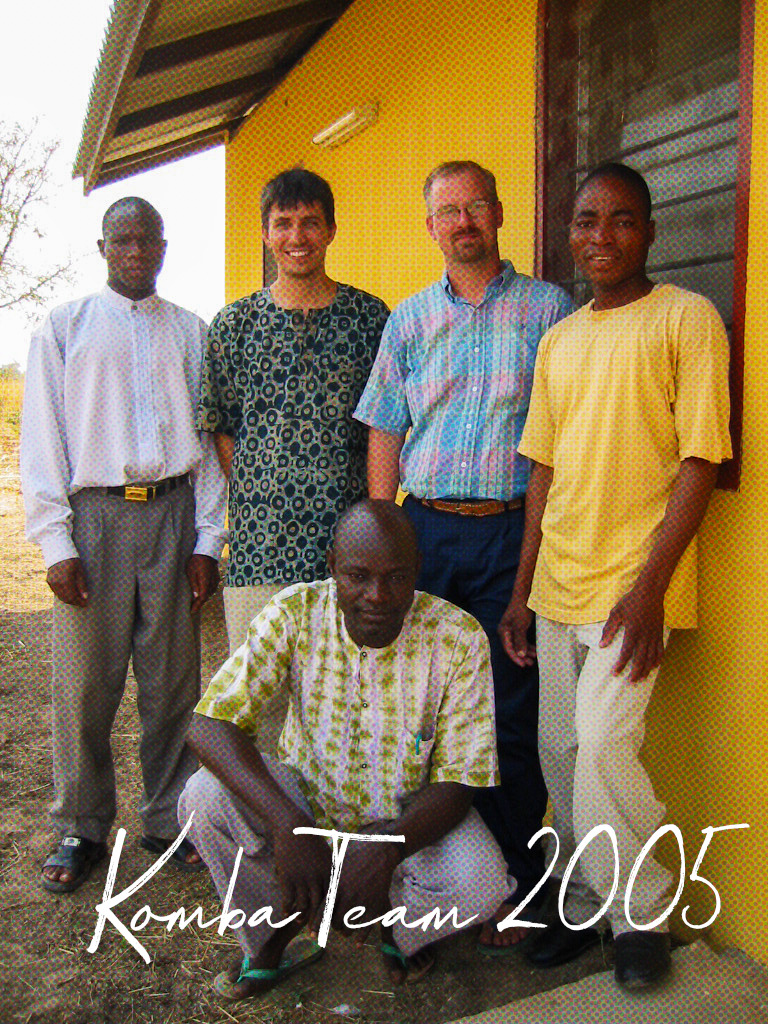
After years of prep work, the New Testament translation is fully organized in 2005, and the team is assembled: Mr. Elijah Matibin, project coordinator with a specialty in Scripture Engagement and literacy; Mr. David Federwitz, literacy and Scripture engagement advisor; Rev. Samson Bilafanim, translator; Rev. Emmanuel Mananyina, translator; Mr. James Adongo Wajak, translator; Rev. Nathan Esala, linguist and translation advisor; and Dr. Fabian Dapila, Translation Consultant.
Before beginning each book, the translators sit down with Rev. Nathan Esala, whose role includes serving as the Hebrew exegete, to discuss the intricacies of that part of Scripture. He is also available for consultation throughout the translation process. As a translator works through the text, he consults several translations and uses Paratext software to ensure the formatting is done correctly. Book introductions, section headings, verse numbers, and footnotes can easily get jumbled, but Paratext keeps everything organized while also checking spelling, formatting, and publishing errors. Each book takes several months, but the translators are committed and press through challenges. All spelling, formatting, and publishing errors find resolution before a book can move to the next stage.
As each book is completed, it undergoes internal review (also known as team checking). Rev. Samson Bilafanim, Rev. Emmanuel Mananyina, Mr. James Adongo Wajak, and Rev. Nathan Esala sit together, reading the translation verse by verse aloud. This tedious process takes quite a bit of time, but they want to ensure the Komba translation is accurate, beautiful, and clear. Once again, they also run basic checks to eliminate typing and publishing errors.
Once the team feels ready to send a portion of translated Scripture to the next level, reviewers are selected from all the Komba area churches representing many different geographical levels. These reviewers receive training to identify areas of concern in the translation. The translation team sends them a printed copy. In some translation projects, reviewers choose to meet in a group, but the Komba reviewers decide to make their suggestions independently. They send their written comments back, and the translation team discusses how they will act based on the comments made. They ask one another, “How can we best respond to the needs of the people while still maintaining translation integrity?”
During the translation of Luke, local pastor and reviewer, Reverend Isaac Gajah, preaches on the text, Luke 13:32, “Go and tell that fox, ‘Behold, I cast out demons and perform cures today and tomorrow, and the third day I finish my course” (RSV) in which Jesus is referring to Herod as the fox. Rev. Gajah chooses not to use the official draft in his sermon and instead gives his own translation of the text. Nathan is present during the sermon and recalls to the team, “this [choice] caught my attention.” Rev. Gajah translated fox to jackal “based on his understanding of jackals as a farmer…he viewed Herod as a predator. The sermon went on to highlight the protective sacrificial character of Jesus as a mother hen… which resounded with the Komba experience of raising chickens around predators.” in the recent draft,
the translation team had chosen to follow the translation handbook’s advice to translate fox as a culturally appropriate wise creature. However, Rev. Gajah’s choice was more intuitive for the Komba, and after “it was researched further and discussed with other reviewers,” the translation team recognized it as a valid historical exegetical option. “[Rev. Gajah’s] alternative translation was an ‘aha’ moment because it made us more careful about overly relying on translation resources. Sometimes local and theological intuition is very insightful!”
This process continues for every book of the New Testament.

Finally, consultant checks can happen! Dr. Fabian Dapila meets with the team in early 2012. He looks through the text, helping the team iron out complex orthographical, exegetical, translation, or publishing issues. Dr. Dapila and the translation team complete the entire New Testament in October.
Another meeting is scheduled, this time with the Computer Assisted Publishing Officer, Reverend Issifu Dokurugu of the Bible Society of Ghana. Together, the team works with Rev. Dokurugu to position maps and illustrations. They finish the manuscript check in March 2013. The typesetting is completed in South Korea just nine months later, and the New Testament is ready for printing! The Komba community prepares for the upcoming dedication while the books are printed, bound, and shipped.
Part 3
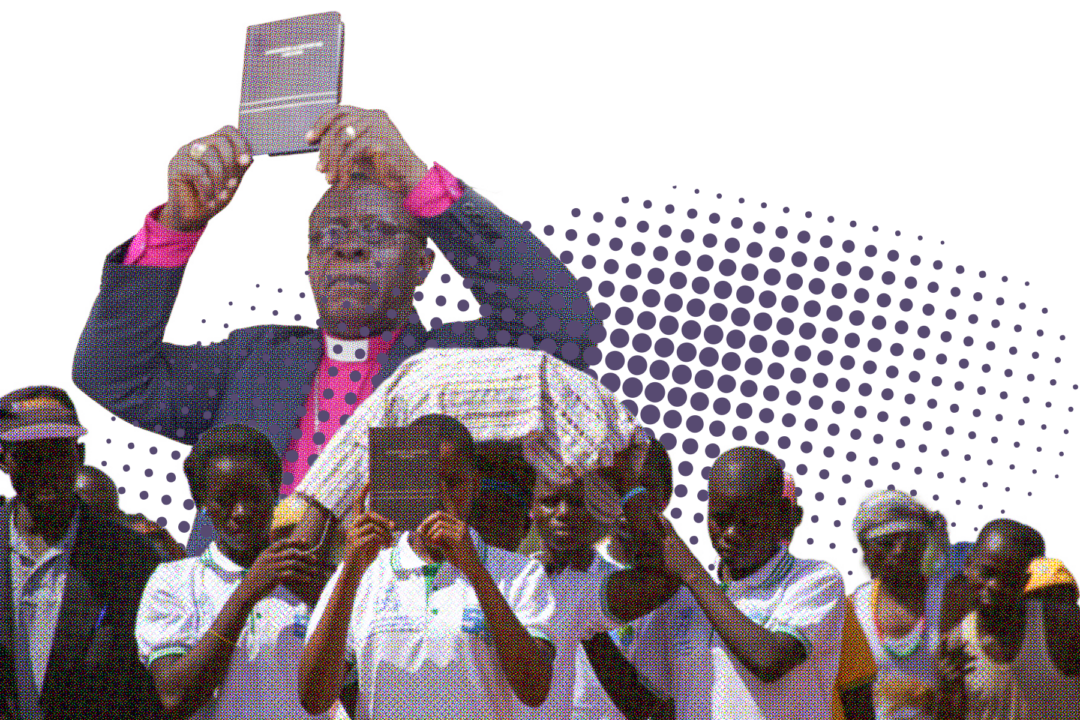
On November 1st, 2014 the Komba community hosts a beautiful celebration – the New Testament is now in their hands. Rev. Mananyina rejoices, “[Reading the Bible] is part of [my people] and they are reading it day in and day out, and they are taking it upon themselves that they want to read the Bible. So they have learned the literacy and they also go somewhere and preach because they can now read the Bible that in the olden time they couldn’t read at all.”
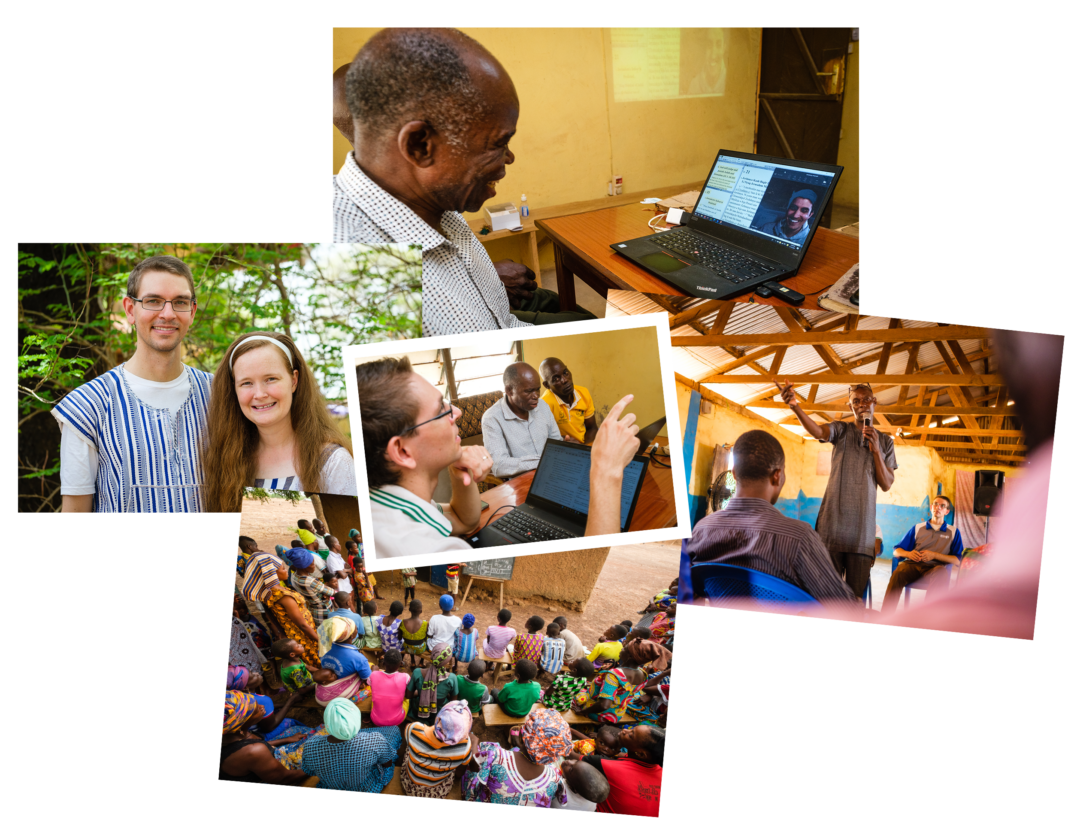
Preparations for the Old Testament project begin soon after the New Testament dedication. Mr. Elijah Matibin is now the KOLIBITRAP Coordinator and takes on the role of guiding the project. Lutheran Bible Translators, the Evangelical Lutheran Church of Ghana, KOLIBITRAP, and Bible Society of Ghana collaborate on a Memorandum of Understanding (MOU) for the Old Testament translation project. This signing celebrates the importance of team collaboration and partnership in the Gospel toward a common goal. Meanwhile, the New Testament is recorded into audio and combined with the text for a smartphone app.
Rev. Nathan Esala and David Federwitz take on different roles within LBT, moving them away from Ghana, and Michael Ersland, a graduate of Concordia University Wisconsin, joins the Old Testament translation team in 2016. He immediately begins language and culture learning in addition to his responsibilities as Exegetical Advisor. He remembers, “It was challenging at first because, as a new person, you’re trying to understand and figure out the dynamics, and that’s a process. I continue to learn and appreciate new things about the men that I work with and their families. I go to naming ceremonies, funerals, and important events in their lives. As I do that, they also learn more about me, and we as a team are growing, learning, and evolving.” Learning about team members has given him an appreciation for the gifts each translator brings to the project.
“[Mr. James Wajak] is older, very highly educated, very highly respected in the community…he has leadership skills, super sharp memory, and years of wisdom and experience and knowing the language in the culture that people here who maybe are middle age or younger don’t know. He also speaks into them creatively as he looks at the younger generations and considers how they talk and what is valuable for us to pass on to them in this translation process.”
“And then we have another man, Pastor Emmanuel Mananyina… he’s thinking about different churches and [asking] ‘how are people using this Scripture in their churches?’ And as we translate, he’s thinking, how are people going to be preaching off of this if we translate it this way? Is that really what God’s word is conveying, or is that going to abuse God’s word? He also tries to promote peaceful relations between different ethnic groups and people groups here.”
“The youngest translator, Elijah Sumani, his memory is so sharp and detail-oriented. [In proofreading] he sees the details from punctuation to spelling and capitalization.” Ersland appreciates it especially when Sumani finds errors that could have easily been overlooked.
Each working day, the team drafts 8-12 verses, depending on the difficulty of the passage. “Sometimes the challenges are some of the animals and some trees. We don’t have them here.” Reverend Mananyina acknowledges, “Sometimes we just …represent the nature of the tree here. But we don’t have the actual tree here and some of the animals the same thing.”
Mananyina, Sumani, Wajak, and Ersland work through these challenges and more to progress the Old Testament through the four stages of translation. Seven years later, they await a full read-through of the Bible when the Old and New Testaments are joined! Join us in prayer for the Komba people to receive their full Bibles soon.
Seth Hinz
Seth Hinz serves as the Director for Brand + Marketing for Lutheran Bible Translators, a position he has held since 2023.
Categories
- Advocate
- Capacity Building
- Education & Resources
- Events
- Field Notes
- Give
- Impact Updates
- Language Development
- Literacy
- Messenger
- Milestones
- Missionaries
- News
- Partner Stories
- Podcast
- Prayer
- Programs
- Scripture Engagement
- Translation
- Uncategorized
Inspiration in your inbox
Sign up for weekly news and podcast episodes.

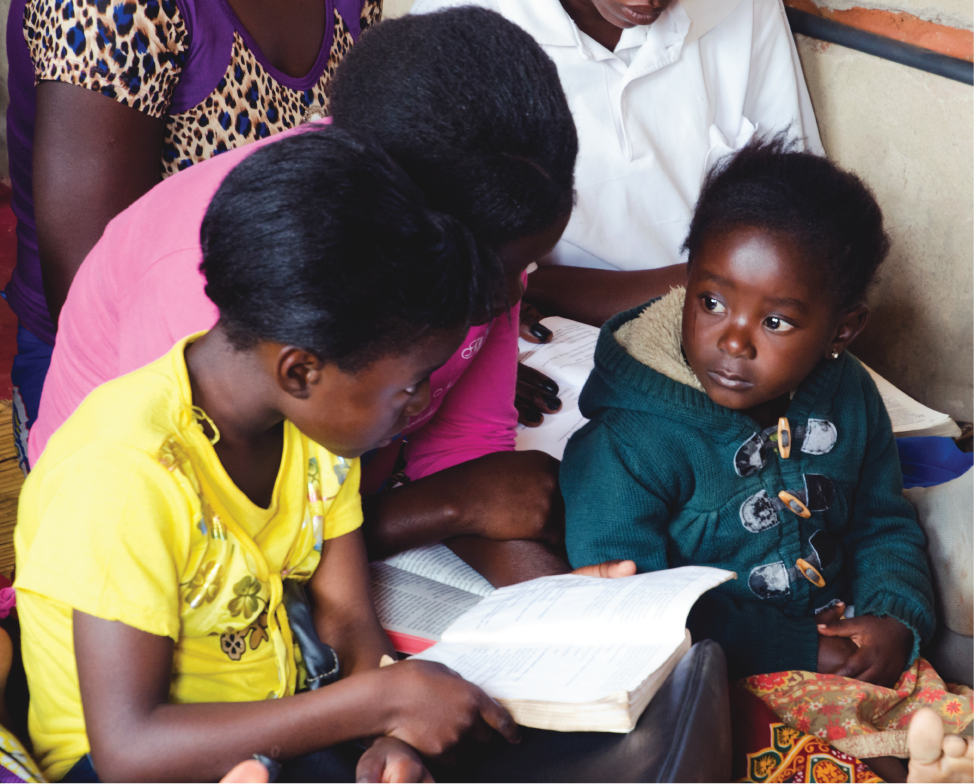
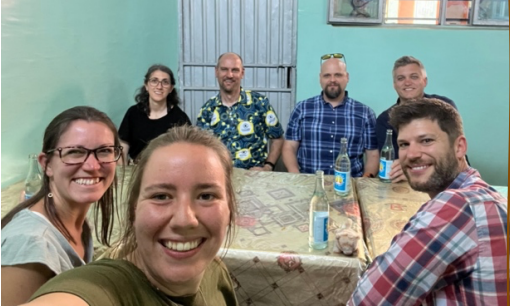
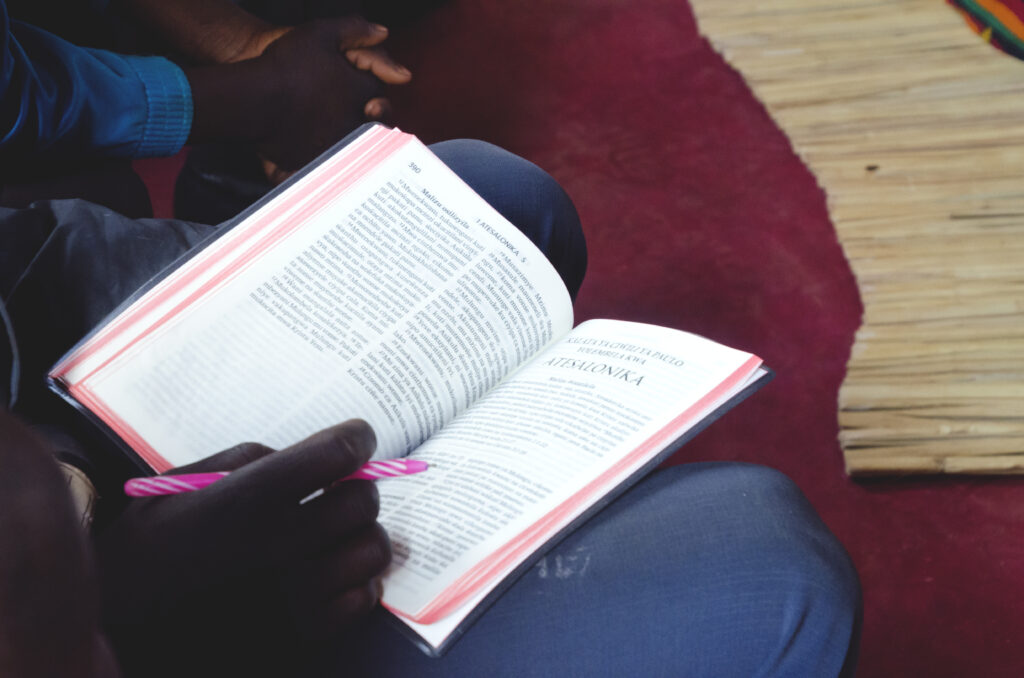
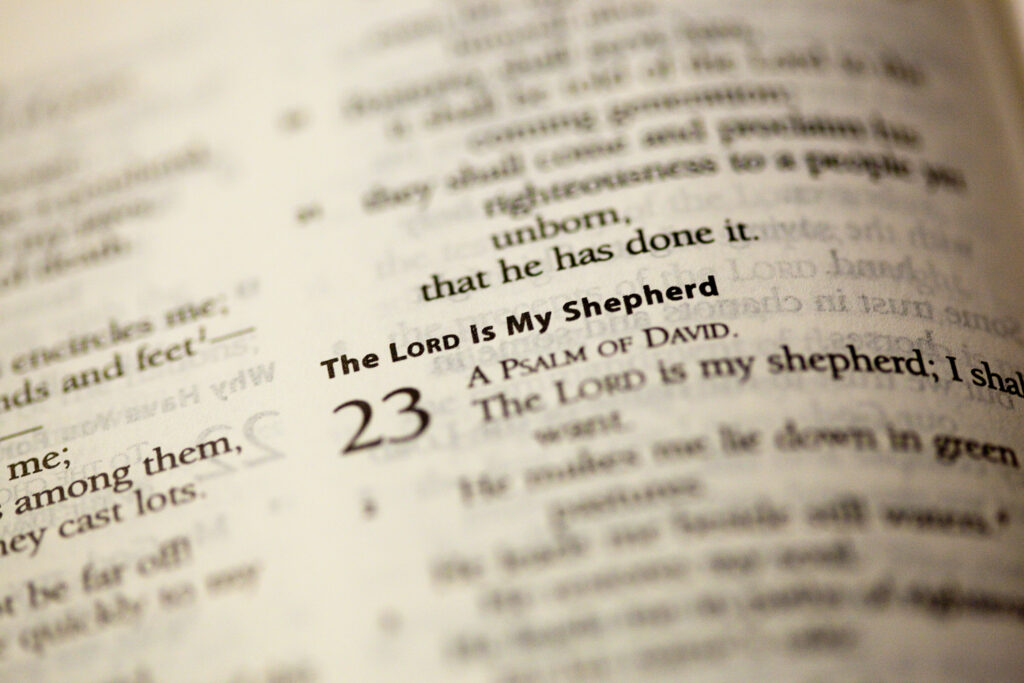
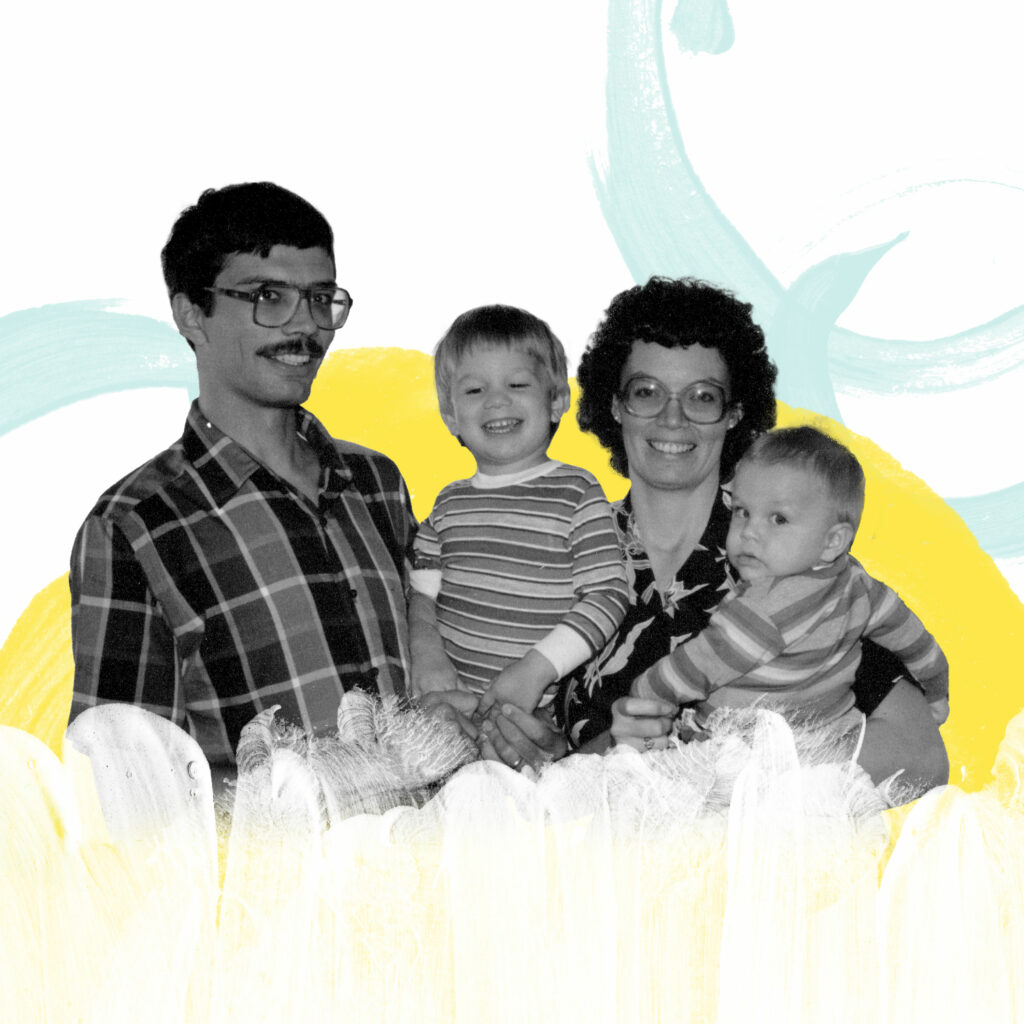
Leave a Reply
You must be logged in to post a comment.